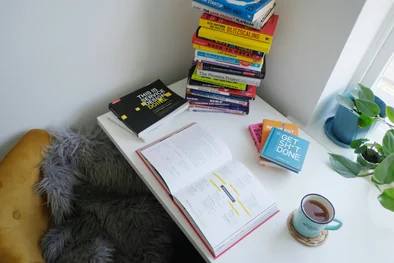Mastering Memory: The Power of Spaced Repetition
Introduction
Studying effectively can often feel like an uphill battle, especially in a world that constantly demands our attention. How can we absorb information efficiently without sacrificing our precious time? The answer lies in a powerful technique known as spaced repetition. By strategically spacing out study sessions, learners can significantly enhance their retention and recall of information, ultimately learning more in less time. This article will explore the science behind spaced repetition, recommend optimal study intervals, and provide both analog and digital methods to implement this technique effectively.
Understanding the Spacing Effect
Spaced repetition leverages a cognitive phenomenon known as the spacing effect, which suggests that our brains retain information more effectively when study sessions are spread out over time. This concept was first systematically examined by psychologist Hermann Ebbinghaus in the late 19th century. Ebbinghaus conducted extensive research on memory, famously creating the Forgetting Curve, which illustrates how information fades over time without reinforcement.
According to Ebbinghaus, cramming information in a single study session often leads to forgetfulness. Instead, spacing out study time allows neural connections to solidify, akin to allowing mortar to dry between layers of bricks in a wall. This approach not only enhances memory but also helps learners build a robust understanding of the material.
Optimal Time Intervals for Learning
To maximize the benefits of spaced repetition, it’s crucial to implement the right timing intervals between study sessions. Research conducted by Piotr Wozniak, the creator of the SuperMemo software, provides insights into effective spacing. Here are some foundational intervals based on his findings:
- First repetition: 1 day
- Second repetition: 7 days
- Third repetition: 16 days
- Fourth repetition: 35 days
A 2008 study involving over 1,300 participants further supported these findings, revealing that the optimal gap between study sessions varies according to the time remaining before a test. Below is a recommended schedule for different test timelines:
| Time to Test | First Study Gap |
|---|---|
| 1 Week | 1-2 Days |
| 1 Month | 1 Week |
| 3 Months | 2 Weeks |
| 6 Months | 3 Weeks |
| 1 Year | 1 Month |
These intervals are approximate and can be adjusted based on personal learning speed and subject matter.
Implementing Spaced Repetition: The Analog Approach
For those who prefer traditional methods, the Leitner System offers a simple yet effective way to utilize spaced repetition with flashcards. Here’s how it works:
- Create Boxes: Designate several boxes or compartments, each representing a different time interval for review.
- Set Intervals: A typical arrangement might include:
- Box 1: Every day
- Box 2: Every other day
- Box 3: Once a week
- Box 4: Once bi-weekly
- Box 5: Retired (review before exams)
- Study Progression: Start all flashcards in Box 1. Move a card to the next box when answered correctly. If answered incorrectly, return it to Box 1.
Using a physical system allows for tactile engagement and can be beneficial for visual learners.
Top Spaced Repetition Applications
For those inclined towards digital solutions, numerous spaced repetition software (SRS) applications are available. Anki is one of the most popular choices, offering flexibility and a vast community of users sharing resources.
Key Features of Anki:
- Customizable Flashcards: Users can incorporate images, audio, and various media to enhance learning.
- Difficulty Ratings: After answering a card, users can rate their performance, allowing the app to adjust future review timings based on difficulty.
- Cross-Platform Availability: Anki is accessible across multiple devices, including web browsers and mobile platforms.
Other notable SRS options include SuperMemo, Quizlet, and Memrise, each with unique features catering to different learning preferences.
Conclusion
In an age where information overload is the norm, employing effective study techniques like spaced repetition can drastically improve your learning outcomes. By understanding the spacing effect, adhering to optimal study intervals, and utilizing either traditional flashcard methods or advanced applications, you can enhance your memory retention and recall abilities. Embrace spaced repetition and transform your study routine into a more efficient and rewarding experience.



